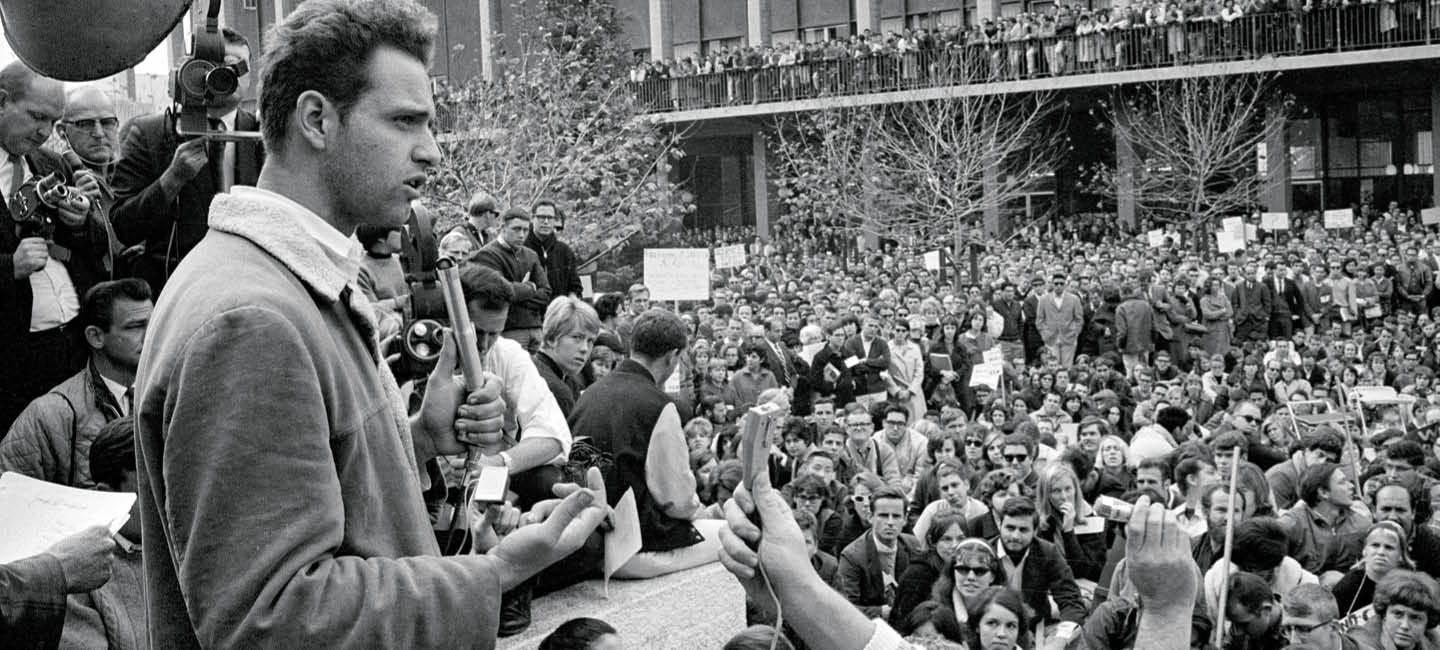Hundreds of students at the University of North Carolina, Chapel Hill, streamed out of their classrooms on a spring day. They gathered for a rally in the campus’s Memorial Hall, holding signs that read “War is legalized murder” and “War is hell.” In Detroit, at Wayne State University, hundreds more defied administrators, converging in a student center to take an oath against war.
These demonstrations were part of a coordinated protest—involving nearly half a million college students on campuses all over the country, from California to Texas to New York. No, the events didn’t play out this past spring, when college students around the nation protested against the war in Gaza. They took place nearly 90 years ago. On April 22, 1936—around the time of the 19th anniversary of the U.S. entry into World War I—college students from coast to coast refused to attend classes to express their opposition to the rise of fascism in Europe and to advocate against the U.S. involvement in foreign wars. It was among the largest in a series of peace strikes that swept campuses in that period. The anti-war protests of the 1930s represented the first mass student movement in American history. There have been many others since.
In recent years, college students have protested everything from climate change to income inequality and gun violence. The latest protest movement in a long tradition of student-led activism boiled over last spring, when protests against the conflict in Gaza spread to dozens of college campuses across the country.
“One of the roles of universities is to ask questions—uncomfortable questions,” says New York University history professor Robert Cohen. “That’s what student movements do, and that’s why they have an impact.”
Some of the student protests, such as the civil rights and anti-apartheid movements, helped achieve tangible goals that have become broadly accepted over time. Others continue to stir debate. Here’s a look at some of the most influential student protest movements in the United States.
Hundreds of students at the University of North Carolina, Chapel Hill, walked out of their classrooms on a spring day. They gathered for a rally in the campus’s Memorial Hall. They held signs that read “War is legalized murder” and “War is hell.” Students at Wayne State University in Detroit also walked out, defying administrators. Hundreds of students met at a student center to take an oath against war.
These demonstrations were part of a coordinated protest that involved nearly half a million college students on campuses all over the country. No, the events didn’t play out this past spring, when college students around the nation protested against the war in Gaza. They took place nearly 90 years ago, on campuses from California to Texas to New York. On April 22, 1936—around the time of the 19th anniversary of the U.S. entry into World War I—college students refused to attend classes. They demonstrated to express their opposition to the rise of fascism in Europe and to advocate against the U.S. involvement in foreign wars. It was among the largest in a series of peace strikes that swept campuses in that period. The anti-war protests of the 1930s represented the first mass student movement in American history. There have been many others since.
In recent years, college students have protested everything from climate change to income inequality and gun violence. Last spring, a new wave of protests against the conflict in Gaza boiled over. Protests spread to dozens of college campuses across the country.
“One of the roles of universities is to ask questions—uncomfortable questions,” says New York University history professor Robert Cohen. “That’s what student movements do, and that’s why they have an impact.”
Some of the student protests, such as the civil rights and anti-apartheid movements, helped achieve results that have become broadly accepted over time. Others continue to stir debate. Here’s a look at some of the most influential student protest movements in the United States.

